Ret Det Leo Smith
Detective Leo Smith joined the Baltimore Police Department in December 1960 as a patrolman. Patrolman Smith started out his career in the Western District, where he worked in the tactacle section. Commissioner James Hepbron founded the K9 unit in 1956; in 1958, it officially became a unit within our agency. Two years into Patrolman Smith's career in 1962, he was transferred from Western District into the still-developing K9 unit, which was well before it had become the unit that it is today. While in the K9 unit, Det Smith handled two dogs: Rusty, a great dog, and Prince, a bit of a biter. Prince was said to have once bit either a doctor or a male nurse at the ER and was also rumored to have bitten an officer in the groin while searching a lumber yard in the Central District. After several years in the K9 unit, Patrolman Smith got the job he had been wanting since he joined the department when he was promoted to the rank of detective and transferred into the fugitive unit. While in the fugitive unit, he became known as one of the best fugitive detectives in BPD history.
Detective Retired Leo Smith

Courtesy of Det. Ret. Kenny Driscoll
Mock Baltimore Police "Trading Card" made to honor my uncle (Ret. Det. Leo Smith)
Det. Smith retired long before these cards were ever thought of.

Courtesy Mabel Smith
Class Photo December 1960
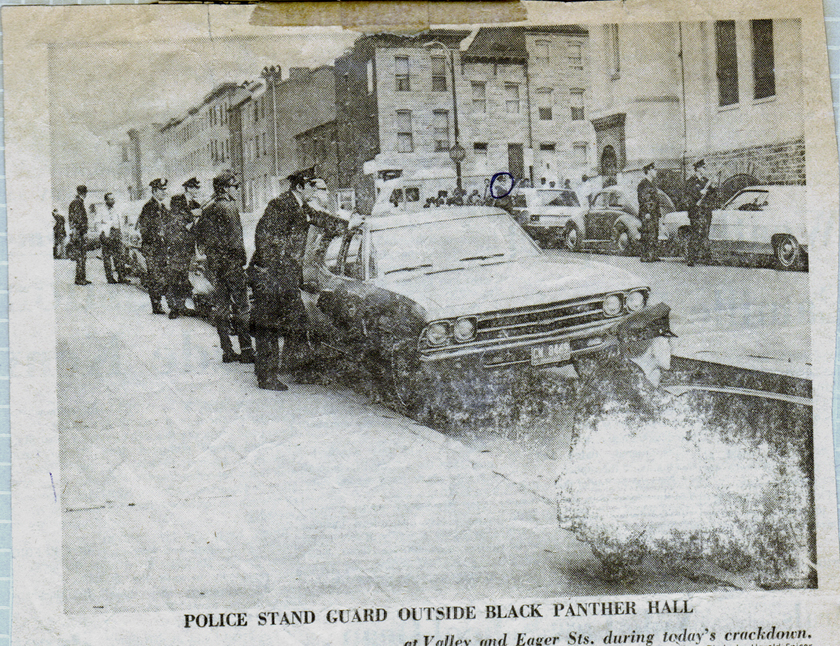 Police Stand Guard Outside Black Panther Hall
Police Stand Guard Outside Black Panther Hall
Circled is Det. Leo Smith

Courtesy: Mabel Smith
In 1976, they Issued new Badges
My Uncle Leo's Badge number was 1858
Retired Detective Leo Smith
Detective Leo Smith joined the Baltimore Police Department in December of 1960 as a patrolman. Patrolman Smith began his career in the Western District, where he worked in the tactacle section. Commissioner James Hepbron founded the K9 unit in 1956; in 1958, it officially became a unit within our agency. Two years into Patrolman Smith's career in 1962, he was transferred from Western District into the still-developing K9 unit, which was well before it had become the unit that it is today. While in the K9 unit, Patrolman Smith handled two dogs: Rusty, a great dog, and Prince, a good dog but a bit of a biter. Prince was said to have once bitten either a doctor or a male nurse at the ER, and he was also rumored to have bitten an officer in the groin while searching a lumber yard in the Central District. Before long, Prince couldn't be counted on for the tasks of a Baltimore K9 dog, so he, like so many others, was flunked out of Baltimore's K9 program and drafted into the military, where he would eventually serve in Vietnam. He was said to have been an outstanding military K9, a war hero who risked his life to save the life of an American soldier. After several years in the K9 unit, Patrolman Smith got the assignment he had been wanting since he joined the department when he was promoted to the rank of detective and transferred into the fugitive unit. While in the fugitive unit, he became known as one of the best fugitive detectives in BPD history.
Det Smith was an above-average patrolman, an exceptional K9 handler, and an outstanding detective. Assigned to the fugitive section in it's infancy, he had an eye for detail and a way with those he had arrested that made them feel as though they owed him something, so when they got out, they would often contact him to give him information about others he was looking for. He told me when I joined that it is important to build a rapport with everyone I talk to, never break a promise, or make a promise you can't keep. If a person feels they can trust you, they will continue to bring you information even after their debt to you has been paid. To them, it is not just putting a favor in the bank; they really want a police officer as a friend; it makes them feel important, but at the same time, he warned me to be careful with informants, as no matter how much of a friend they pretend they are to you, you can't trust them. They are what they are, and they really are not your friends. Det Leo Smith was a great storyteller and often used a story to illustrate his point. If one wanted to learn, he was the guy with enough experience to tell some great first-hand police stories, aka "war stories." I know firsthand; he is my uncle, and to me, he was both an amazing police officer/detective and an outstanding uncle.
During a camping trip in 1974, when I was just ten years old, we were on a family vacation. He was telling some of his war stories while we sat at a picnic table in our camp site, D40 Shad Landing State Park in Snow Hill, Maryland. (My uncle's camp site was D39, right next to ours.). While we talked, two camp ranger trucks pulled up. It was filled with a couple park rangers in each truck; at first, they went to my uncle's campsite. My aunt directed them over to our site; it was Thursday, August 1st, 1974. When the rangers saw me sitting there, they decided to call him away from me to talk in private. They escorted him to the end of the driveway, where they gave him some bad news. I could tell it was bad because it seemed that this group of as many as five or six adults were choked up; it was as if they wanted to cry; they were all emotional but didn't shed a tear, at least not in front of me. After talking to the Rangers, my uncle quickly broke camp, and he and most of his family left for their trip back home. In a few days, Det Leo Smith would be pallbearer for his sergeant, Baltimore Police Detective Sergeant Frank W. Grunder, Jr.
Sergeant Grunder was killed in the line of duty on that 1st day of August, 1974, based on the following: Det. Sgt. Grunder, the head of the department’s new escape and apprehension unit, had spent several weeks attempting to track down the elusive members of a slippery hold-up team. On August 1, 1974, after a day of patrolling locations in the city in an attempt to find these dangerous men, Sgt. Grunder had not yielded any positive results. The sergeant went home empty-handed. While off duty, Sergeant Grunder was driving on Harford Road near Hamilton Ave. with his wife and their three children. As he approached Echodale Avenue, he saw a man sitting crouched down on the steps leading from the street to the playground lot of St. Dominic’s Roman Catholic Church. Weeks of waiting and watching had finally paid off; this was one of the suspects. He parked his car a safe distance from the church, called for a uniformed officer as a backup, and waited. Officer Joe L. Shaw of the Northeastern District wasn’t assigned as a backup unit but readily stopped when Sergeant Grunder waved him down. The 12-year-old veteran explained the situation to the newly graduated rookie officer, Joe L. Shaw a uniformed officer was Shaw, and as they approached the suspect, who was still sitting on the steps, Sergeant Grunder was a few feet ahead of Officer Shaw. As Sergeant Grunder ordered the suspect to stand and place his hands on the wall, the suspect lurched to his feet, turned, and began running up the steps. Sergeant Grunder gave chase and reached the top step, where the suspect went from a full-speed sprint to a dead stop as he drew his gun from his waist and wheeled it in the Sergeant’s direction as he began firing on the Sergeant at point blank range. The sergeant was able to return fire as he sent three rounds back in the suspect's direction. Sergeant Grunder then fell to the sidewalk, mortally wounded. Officer Shaw took over the gunfight, exchanging rounds with the suspect. The suspect was struck, and he too dropped to the ground. Detective Sergeant Grunder was transported to Union Memorial Hospital, where he was pronounced dead upon arrival. The assailant, a resident of the area, was also pronounced dead. An investigation into the suspect’s past revealed a string of felony arrests dating back to 1960.
Funeral services were held for 34-year-old Detective Sergeant Frank Grunder on August 5th at St. Dominic’s Catholic Church. As a ten-year-old, I was so impressed by my uncle’s life that I wanted to follow in his footsteps. I wasn't sure I was cut out for this kind of work, but I was so impressed that I had to try. On June 17, 1987, I joined the Baltimore Police Department. I was 23 years old, with a wife, a son, and another son on the way, I had helped a Baltimore County officer who was nearly the victim of an attack during a neighborhood dispute. After helping her, I identified two suspects who had done a hit-and-run on my car as I was driving my wife and our oldest son to get something to eat. The officer's seargent asked what I did for a living, but before I could answer, he added, “If it’s not law enforcement, you are in the wrong line of work!” That night, I had a long talk with my wife, reminding her of my uncles. I had two on the force, but it was my Uncle Leo in particular that we had talked about, and all he had done with the BPD. Baltimore City Police had hired me within a year of that accident. I stayed with the city for 16 years before breaking my back in the line of duty, and I credit my uncle for having provided such a positive role model.
The following pictures will show you why I loved this uncle so much and why I followed in his footsteps. While showing you these pictures, I hope you will see the dedication of most of our Baltimore police, but moreover, the dedication of retired Detective Leo Smith. I didn't nominate him for the Baltimore Police Hall of Fame because I can't participate in nominations when they involve a close friend or family member. We had others that knew of my uncle and his work; they shared their stories of his identifying suspects from within crowds or from a block or more away. One of his old partners told of a time when he identified a guy that was looking out of a second-floor window that Det Smith had seen as he was in the passenger seat of an unmarked police car that was driving the speed limit as he passed the suspect. When he was asked by his partner how he knew it was the guy, he said, First I noticed his face looked like the mug shot, but then I saw he was missing a finger, and I read in the rap sheet that our guy is also missing a finger. They went back, made their way to the second floor, and sure enough, it was their man. This was seen on the way to another location, and his partners were impressed at the attention to detail he had while on the streets. Another officer told of how, as a rookie, he was looking for a suspect and called the fugitive unit for advice. Detective Smith told him where to stand and at what time he should stand there. He thought this vetern detective may have been playing a prank on him or he might have been crazy, but he did as the detective told him to do, and just as the detective said he would, the suspect came running right to him. In fairness, he was trying to escape Detective Smith, but Detective Smith laid a trap, chasing him right to the waiting arms of the young officer. The rookie officer was able to snatch his wanted subject as he ran right to him. We got these and plenty of other similar stories that demonstrated the dedication Det Smith had to the job, and that is why he was nominated and elected into our Baltimore Police Historical Society Hall of Fame.
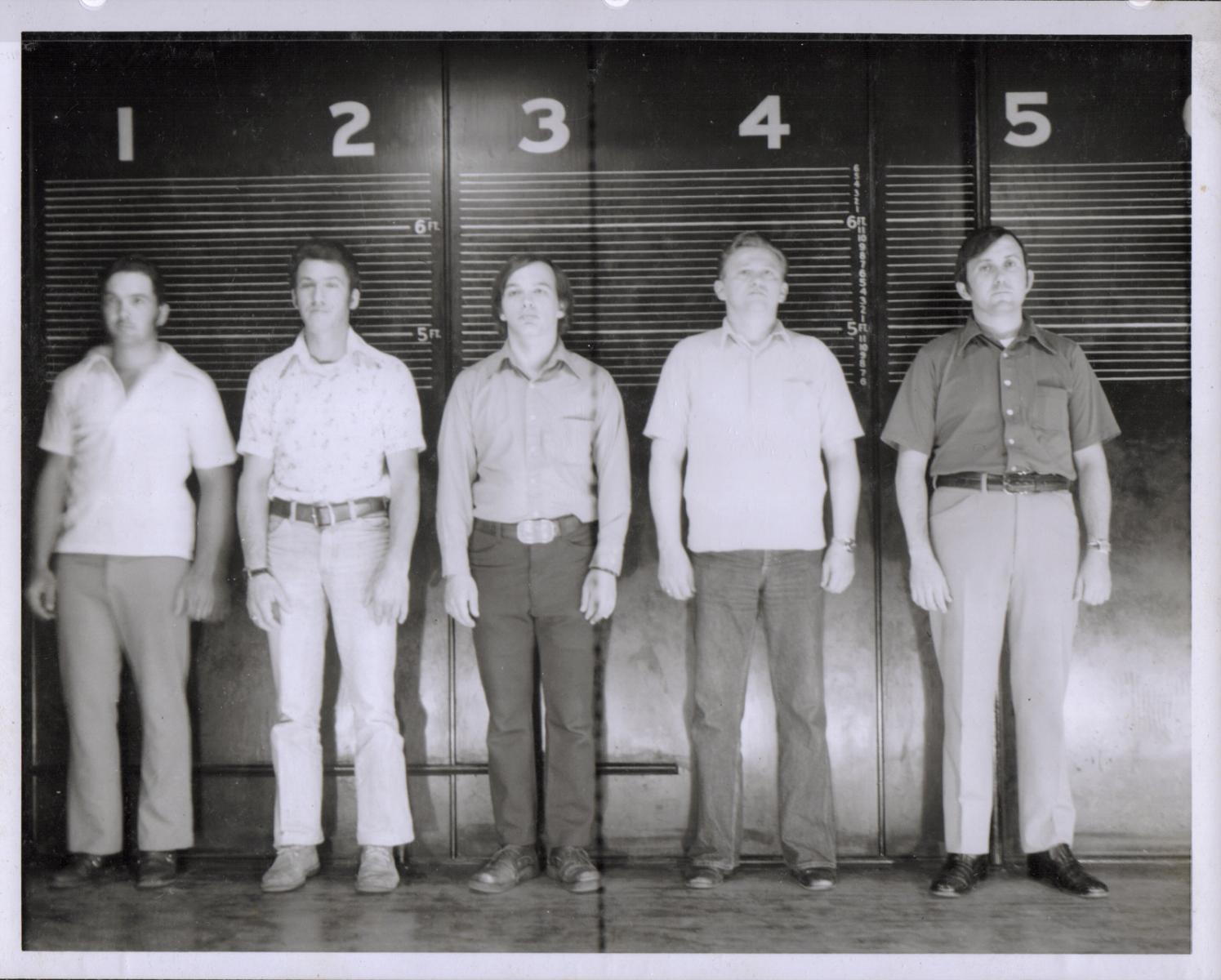
Courtesy Mabel Smith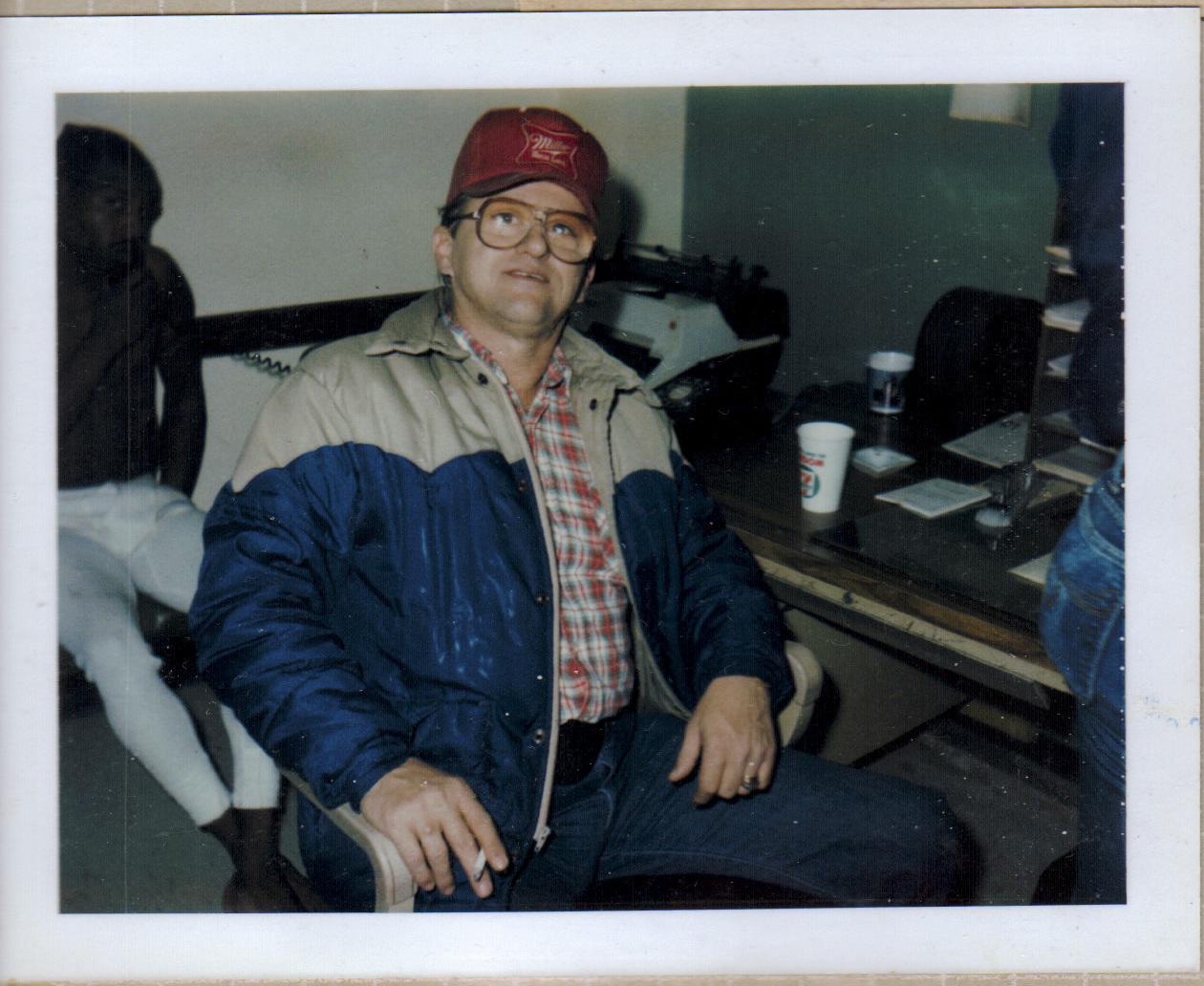 Courtesy Mabel Smith
Courtesy Mabel Smith
Ret. Det. Leo Smith in undercover clothing
Courtesy Mabel Smith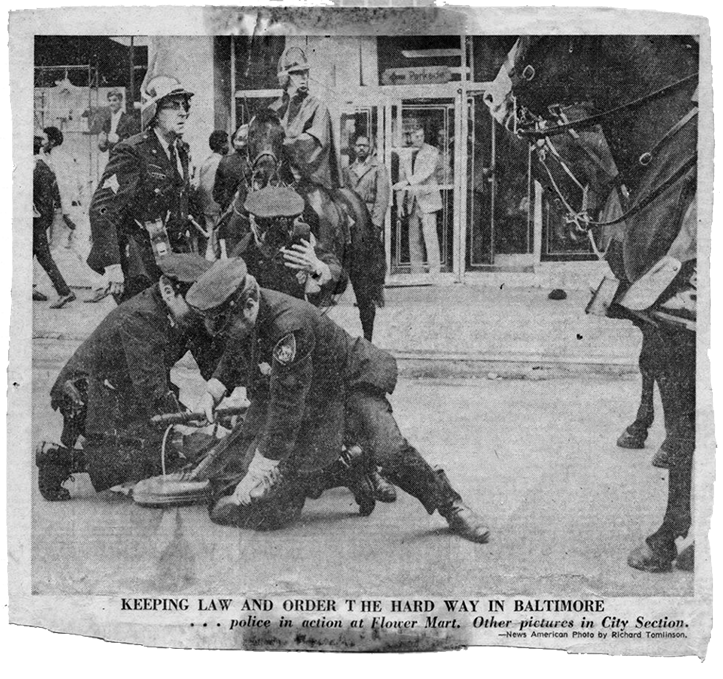 Courtesy Mabel Smith
Courtesy Mabel Smith
Officer Leo Smith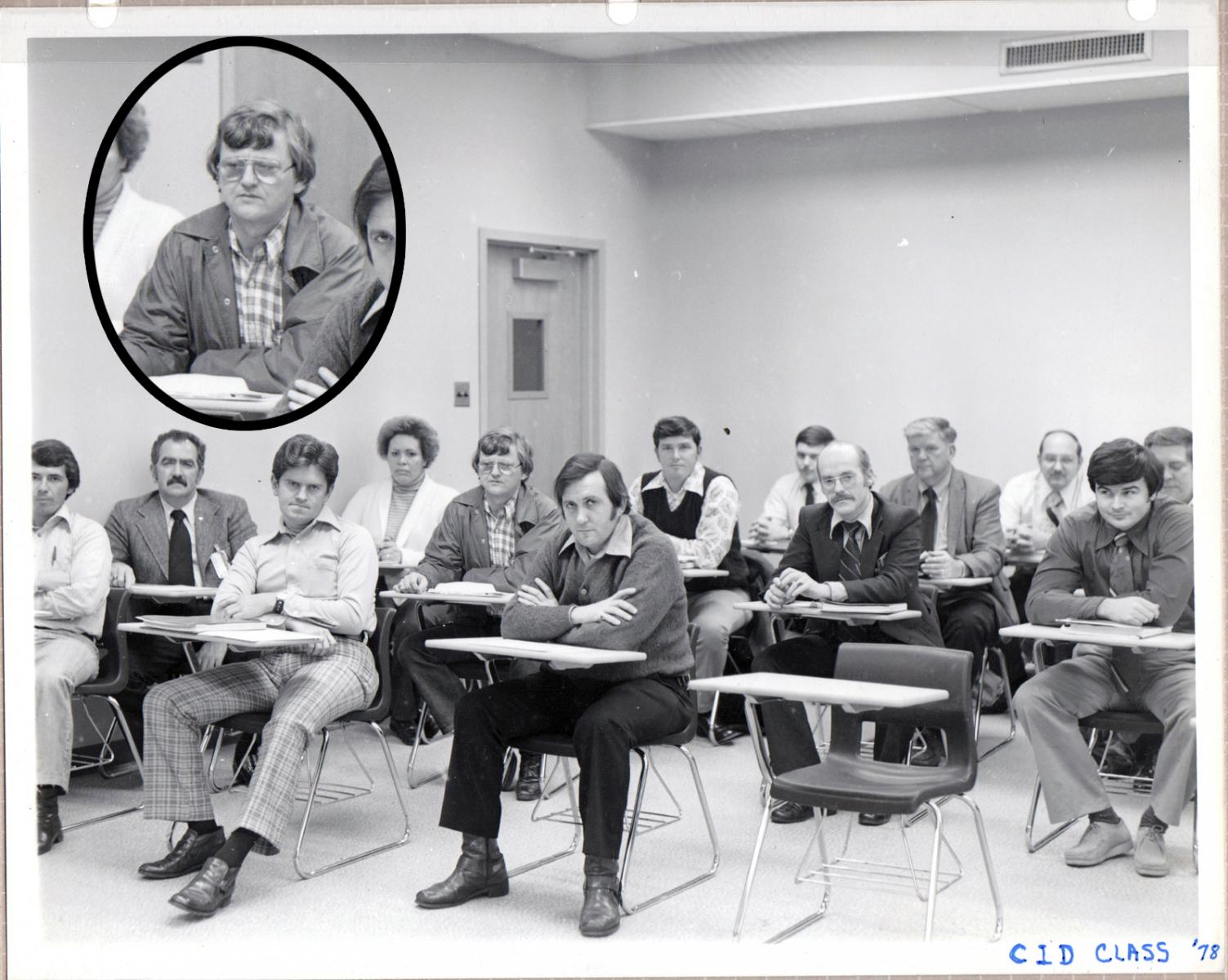
Courtesy Mabel Smith
1978 Criminal Investigation Training Class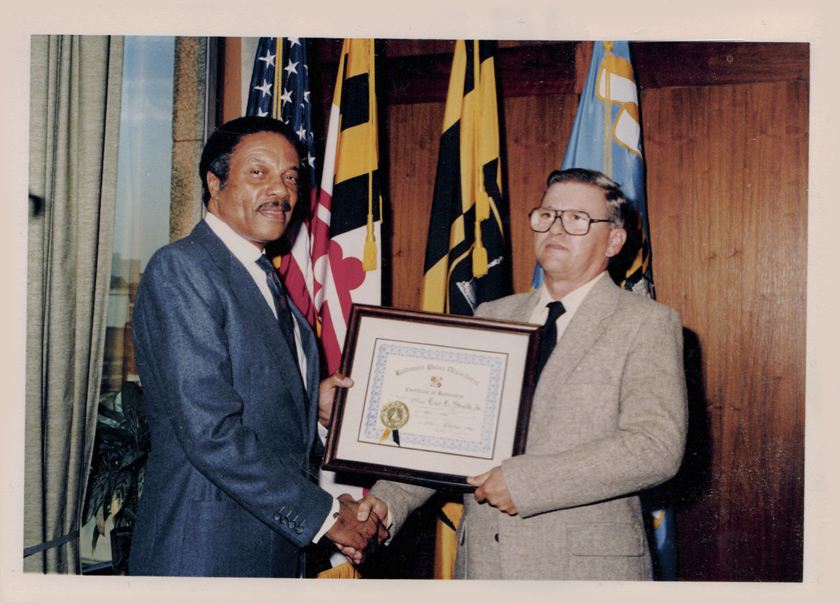
Courtesy Mabel Smith
Retirement with Commissioner Bishop Robinson

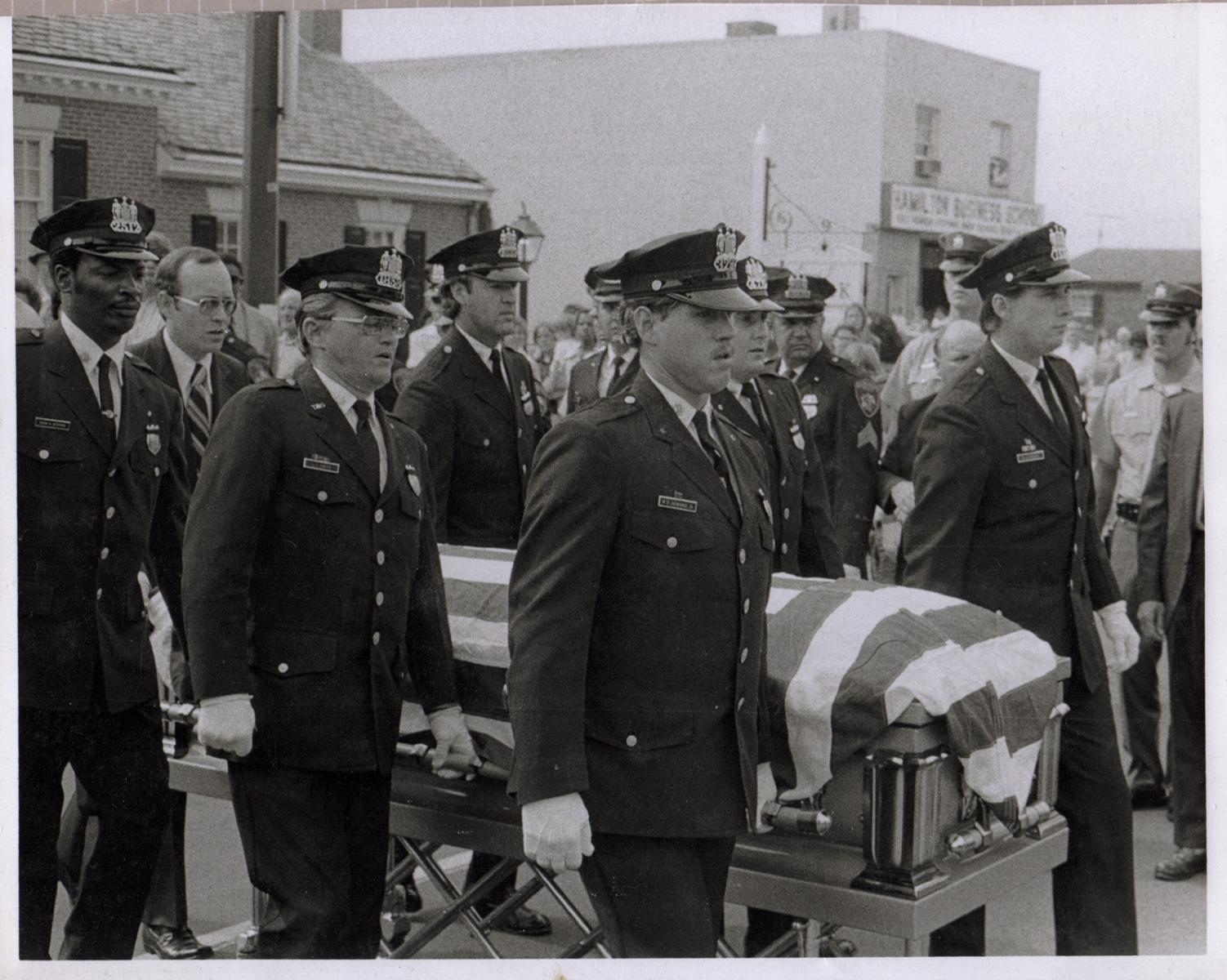
Courtesy Mabel Smith
August 5th, 1974, funeral of Detective Sergeant Frank W. Grunder, Jr
He loved and Respected the Job Courtesy Mabel Smith
Courtesy Mabel Smith
Retirement
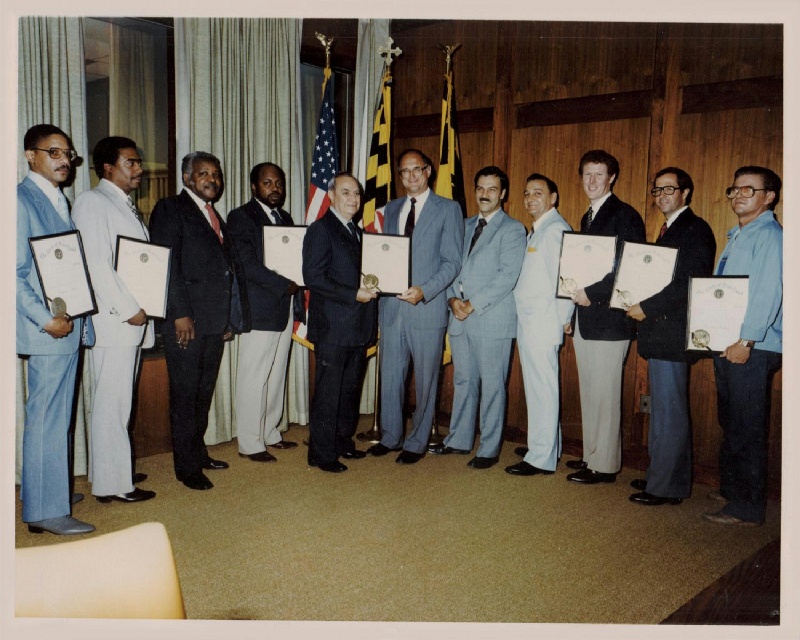
Courtesy Mabel Smith
Retirement
![]()
POLICE INFORMATION
Copies of: Your Baltimore Police Department Class Photo, Pictures of our Officers, Vehicles, Equipment, Newspaper Articles relating to our department and/or officers, Old Departmental Newsletters, Lookouts, Wanted Posters, and/or Brochures Information on deceased officers and anything that may help preserve the history and proud traditions of this agency Please contact retired detective Kenny Driscoll.

NOTICE
How to Dispose of Old Police Items
Please contact Det. Ret. Kenny Driscoll if you have any pictures of you or your family members and wish them remembered here on this tribute site to honor the fine men and women who have served with honor and distinction at the Baltimore Police Department.
Anyone with information, photographs, memorabilia, or other "Baltimore City Police" items can contact Ret. Det. Kenny Driscoll at
Copyright © 2002 Baltimore City Police History: Ret Det. Kenny Driscoll

